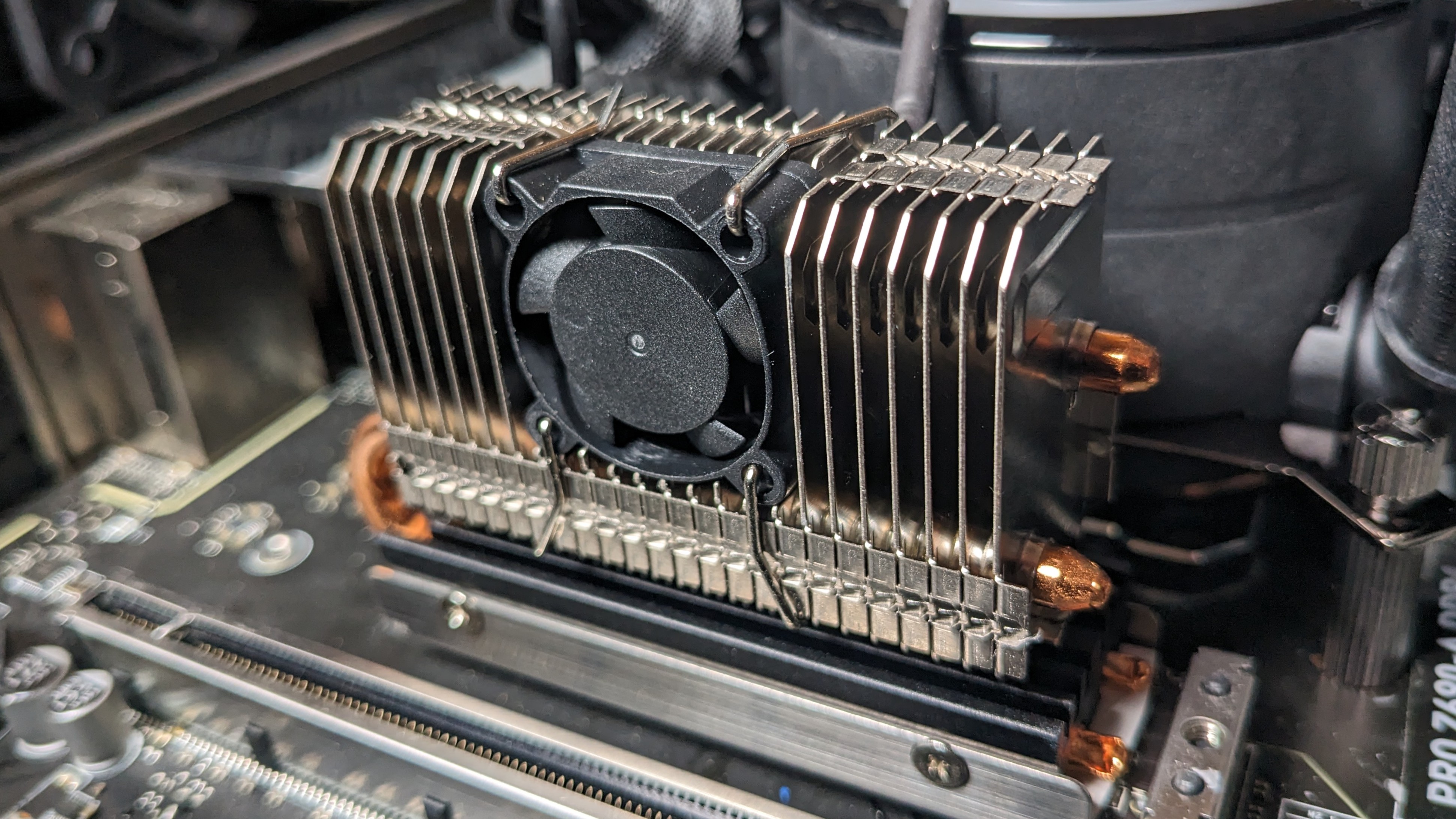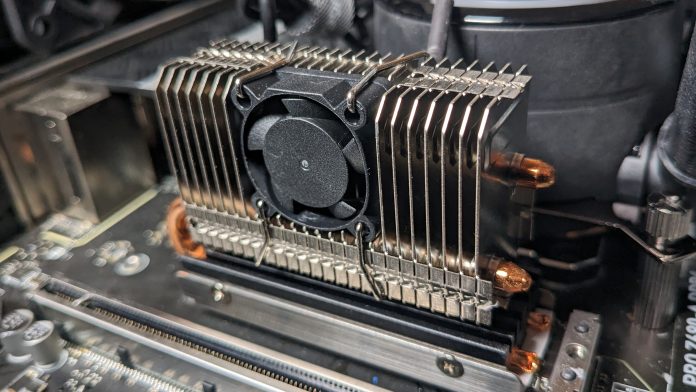
The latest NVMe SSD cooler to land on our testbed is the G-M2HP04-F (isn’t that a mouthful?) from German manufacturer Graugear. If you’re not familiar, Graugear specializes in niche storage peripherals like thefunky Playstation 5 SSD cooler which takes advantage of that console’s CPU fan. Also included in its lineup are a variety of internal and external storage adapters, USB hubs, and other types of SSD coolers and heatsinks. What sets the G-M2HP04-F apart from the competition? Two copper heatpipes, aluminum fins, and a fan for active cooling. Is this enough to become one of our recommended SSD coolers and heatsinks? Let’s take a dive into the specifications and features of this unit, then we’ll go over its thermal performance and our recommendation.Cooler specifications(Image credit: Tom’s Hardware)Swipe to scroll horizontallyCooleriHTP M.2 SSD CoolerMSRP$29.95 USDRadiator MaterialAluminum finsHeatpipesTwo 5mm copper heatpipesFan SpeedUp to 8500RPMFan size25 mm x 25 mm x 10 mmAir flow2.87 CFMLightingNoneWarrantyTwo yearsPacking and included contents(Image credit: Tom’s Hardware)The packaging is fairly simple, with the cooler arriving in a small box just large enough to contain the product. Included in the box is the heatsink and fan, the base, two sets of thermal pads, a screwdriver, and documentation.(Image credit: Tom’s Hardware)Features of Graugear’s G-M2HP04-F▶️ Two copper heatpipes(Image credit: Tom’s Hardware)The first thing that sets Graugear’s heatsink apart from the competition is its incorporation of two 5mm copper heatpipes.▶️ Aluminum fins, like a mini CPU coolerThe copper heatpipes of the SSD cooler connect to aluminum fins, much like a mini CPU cooler. In fact, with a little bit of tinkering, one could adapt this product to cool a low-power CPU!(Image credit: Tom’s Hardware)▶️ Active 25mm fanBut heatpipes and aluminum fins aren’t the only tools this Graugear SSD heatsink uses to keep your drive cool – it also features a small 25mm fan to push heat away from your NVMe drive.(Image credit: Tom’s Hardware)Testing configuration and methodology – LGA1700 platformToday’s review will be the last of a heatsink tested on my last-generation platform, which was limited to PCI- 4.0 speeds. To test the effectiveness of a SSD heatsink or cooler, I run a custom IOMeter script that stresses both the SSD’s controller and NAND. The SSD heatsink is installed in the M.2 slot next to the CPU, which is cooled by an AIO.Cooling an SSD on a PCIe 5.0 system can be more difficult, and whether your CPU is cooled by an AIO or air cooler can impact the performance of SSD heatsinks. To see how this might impact results, I encourage you to visit my recent review of iHTP’s SSD heatsink – which features testing on a modern Arrow Lake platform that supports PCIe 5.0 speeds, and has tests performed with both an air cooler and AIO cooler.Please keep in mind that if you’re wondering if you need an aftermarket SSD heatsink at all, the answer is likely “no.” These types of devices will be most useful for those users who have storage and IO-intensive workloads in an environment with a high ambient temperature, like servers. For most common users, the benefit of a stronger SSD heatsink will be limited to increasing the longevity of your SSD.Swipe to scroll horizontallyCPUIntel Core i7-13700KMotherboardMSI Z690 A Pro DDR4SSDTeamGroup Z540CaseBe Quiet! Silent Base 802, system fans set to speed 1 setting.PSUCooler Master XG Plus 850 Platinum PSUTesting MethodCustom IOMeter Script, 30 minute test lengthHeatsink InstallationThe installation of an SSD heatisnk is simple, and if you’ve seen one you’ve basically seen them all. There’s very little variance in installation procedures, due to the similarities of these units.1. Take the base of the unit and apply the first thermal pad. Then place the SSD on top of the first thermal pad.(Image credit: Tom’s Hardware)2. Place the second thermal pad atop the SSD.(Image credit: Tom’s Hardware)3. Place the heatsink above the top thermal pad, and then secure it with the included screws.(Image credit: Tom’s Hardware)4. Finally, place the unit into an M.2 slot on your motherboard and then connect the PWM cable. I’ve installed this unit in the slot between my GPU and CPU cooler, but you may need to use another slot if you have a particularly wide air cooler.(Image credit: Tom’s Hardware)
Graugear G-M2HP04-F NVMe Cooler Review: Two heatpipes and a fan deliver strong performance

